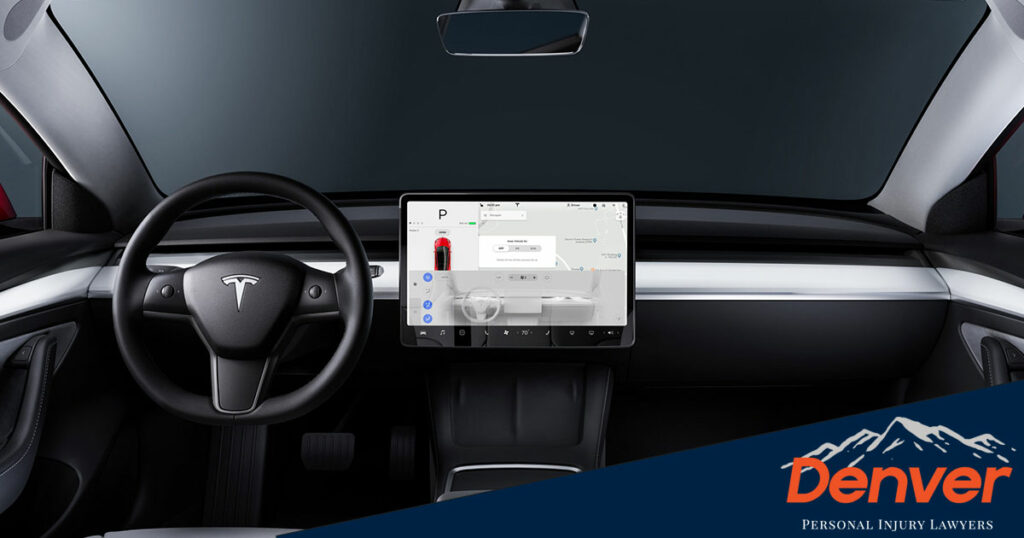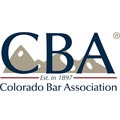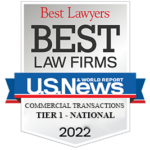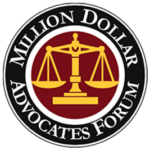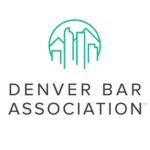The technology in Teslas are changing the way auto accident injury claims are handled. If you were injured as a result of a Tesla driver’s negligence OR if you own a Tesla and want to help your case, please use this guide as a resource.
With modern technological advancements, electric vehicles like Tesla are among the fastest growing companies globally. In 2020, Tesla sold nearly 500,000 vehicles. Their electric cars are a modern symbol of eco-consciousness and luxury. But, how safe are their cars?
Recent accidents involving Tesla have resulted in severe consequences and even fatalities. Unfortunately, many drivers have learned that Teslas are not as foolproof as we thought.
Tesla has made public statements to protect its brand and made it clear that the driver is liable after an accident, even in “self-driving” cases. As a result, accident victims who have sustained injuries in Tesla accidents have learned that filing a car insurance claim or a personal injury lawsuit is far from easy. But, in some cases, it may be the only way to recover the compensation and recover for the accident damages.
Table of Contents
ToggleWhat’s The Difference Between Autopilot and Fully Self-Driving Tesla Vehicle?
In September 2014, Tesla launched its first line of AutoPilot hardware, including one camera, a first-generation radar, and ultrasonic sensors. Then, in October 2020, Tesla released a Full “Self-Driving” beta program. In other words, it was a preview version released to the public before the final release. Some people have criticized Tesla’s decision to sell the beta software to untrained consumers as dangerous and irresponsible.
AutoPilot gives automated benefits like hands-free steering, braking, and acceleration. However, the company has publicly stated that drivers should not rely entirely on Autopilot. Moreover, recent accidents have shown that the autopilot system can make errors and cause accidents.
While Tesla’s AutoPilot feature gives some leeway to drivers, it still requires driver supervision. Unlike AutoPilot, the fully self-driving Tesla will not require human operation. The cost of AutoPilot is already factored into the Tesla, but the fully self-driving feature will be an add-on cost. With the fully self-driving Tesla, the car owner can enter their destination, and the car will “self-drive” there.
Tesla Safety Under Investigation
There have been numerous recent accidents with Tesla drivers who were relying on AutoPilot. As a result, the National Highway Transportation and Safety Administration (NHTSA) advises that a driver should always remain behind the wheel of a car, whether driving on AutoPilot or the Self-Driving feature. They estimate that by 2025, advanced versions of fully self-driving vehicles will be available to the public. They have also stated that with fine-tuned technology and proper regulations, self-driving cars can be advantageous for several reasons. First, they may help decrease human error that contributes to car crashes. In addition, we can expect a significant reduction in carbon emissions.
As of March 2022, there are 750,000 Tesla vehicles on the US roadways, all of which have the AutoPilot feature. We also know from Tesla’s internal safety reports that safety statics continue to improve. And in 2021, Tesla only recorded one crash for every 4.97 million miles driven per vehicle.
While Tesla’s overall crash per miles driven is low, there have still been several accidents involving drivers using AutoPilot. So in June of 2022, NHTSA decided to investigate whether Tesla’s driver assistance system could increase the crash risk. They will use engineering analysis to conduct a more intensive look at the vehicle’s reliability. The investigation will also examine whether Autopilot is associated with predictable risky behaviors by drivers while using the system.
The NHTSA’s investigation will cover 830,000 vehicles sold in the US and include all four Tesla models – S, X, 3, and Y – manufactured from 2014 to 2021. The process is predicted to take anywhere from several months to a year. If they conclude any safety defects, that may prompt grounds for the manufacturer to initiate a recall and correct any issues.
Tesla Car Accidents
NHTSA has recorded 273 crashes involving Teslas from July 2021 to May 2022. As of December 2021, there are 284,000,000 registered vehicles in the US, and Tesla only accounts for less than 1% of them. Due to the relatively small prevalence of Teslas, it’s more challenging to determine how Tesla’s self-driving accident statistics compare to regular cars.
Despite Teslas representing less than 1% of all registered vehicles in the US, Tesla accidents always receive widespread media attention. In almost all Tesla accidents, criminal and civil liability questions arise. The NHTSA launched 22 Tesla-related investigations in 2021. Here are some Tesla accidents that have garnered some of the most public attention:
- In 2016, Joshua Brown was the first person to die in a fatal crash using Tesla Autopilot. He was driving the Model S when he crashed into a tractor-trailer on US Highway 27A in Florida.
- In 2019, Jeremy Beren Banner died in a similar Florida highway accident. He was driving a Model 3 on Autopilot and collided with a tractor-trailer that sheared the roof of his Tesla.
- In 2018, a California Tesla driver using Autopilot and distracted by a videogame died in a crash.
- In 2019, Kevin Riad ran a red light in California and killed two people. He claimed his Autopilot was to blame. He ended up facing two counts of vehicular manslaughter and is the first person in the US to face felony charges involving an automated driving system.
- In 2021, a Tesla collided with a police car in Orlando, Florida, which prompted an NHTSA investigation.
- In January 2022, a former Tesla employee shared a video of a fully self-driving vehicle crashing into a pole.
- In 2021, a valet driver crashed a Tesla model 3 in a parking garage. The driver claimed that Autopilot was to blame, but after retrieving the Tesla’s black box data, he was found liable for the crash.
Determining Liability in a Colorado Tesla Car Accident
Determining liability in “self-driving” car accidents largely depends on retrieving the car’s black box or event data recorder (EDR). Until recently, the driver has almost always been found liable for accidents involving Teslas. However, now that NHTSA has launched an investigation into Tesla’s safety score, they may face partial responsibility in crashes involving AutoPilot or self-driving.
As self-driving cars improve and become more fine-tuned, we might observe a shift in liability from the driver to the manufacturer. Theoretically, this would occur with the mass production of autonomous vehicles.
As of now, liability is determined on a case-by-case basis. However, that may change in the future if NHTSA sets federal safety regulations for driver and manufacturer liability.
The manufacturer could be found liable as a result of:
- Faulty autopilot steering
- Brake malfunction
- Automatic acceleration that overrides driver operation
On the other hand, we can establish driver liability with circumstances like:
- Overly relying on Autopilot
- Reckless or aggressive driving
- Driving under the influence of illicit substances
- Failure to yield
What Is the Tesla Black Box?
Tesla’s “black box,” also known as an event data recorder (EDR), records information about vehicle crashes or accidents. In the US, all EDRs must meet specific federal standards as described in the US Code of Federal Regulations. The EDR is a powerful tool that can help analyze and understand crash dynamics. In addition to improving vehicle safety, it can serve as evidence in car accident cases.
For a company like Tesla, which relies heavily on data, EDRs are critical evidence after an accident. In the case of the valet driver discussed above, the vehicle’s owner contacted Tesla to retrieve the EDR report. Tesla claimed that they could not provide the EDR report due to legal reasons, but he was able to retrieve it through an EDR technician for $1,300.
The EDR is a highly technical report that may require an experienced technician to interpret and make conclusions. In addition, EDR data can vary depending on the automobile type and includes various sections.
What Can Your Lawyer Find Out From an EDR Data?
Pre-Crash Data
The pre-crash data section gives insight into the status of vehicle safety systems and speed. This section also provides data about:
- throttle application
- break use before the crash
- ABS activity
- Stability control
- Traction control
- Seat position of the driver
- Whether or not the driver was wearing a seatbelt
Various sensors in the car help collect data for the pre-crash section.
Vehicle Forces
This section of the crash data details the forces acting on the vehicle if a crash occurs. The EDR continuously records this data over minute intervals and includes information about:
- Longitudinal acceleration – measures the vehicle’s acceleration and deceleration and whether it was impact-induced.
- Lateral acceleration – this measures how hard the vehicle is cornering (or turning) and whether it is impact-induced.
- Yaw rate – measures the rate at which the vehicle changes its degree of rotation.
- Roll rate – measures the vehicle’s torque or degree of roll; affected by tire pressure and center of gravity.
- Steering wheel angle – the position of the steering wheel.
Tesla’s EDR Report
Tesla collects a host of information from their EDR data through sensors in various placements throughout the vehicle. In the case of the negligent valet driver, the EDR report obtained by the Tesla owner was 70 pages long.
Teslas only records data through the EDR when it senses a significant physical event. Meaning it doesn’t record data under ordinary driving conditions. The primary purpose of Tesla’s EDR is to record crash or near crash-like situations, such:
- airbag deployment
- hitting a road obstacle
- and collect data to understand better how the vehicle’s systems performed.
How Do I Access EDR Data After a Tesla Accident In Colorado?
Tesla provides free and publicly available software you can use to access and obtain EDR data. While it wasn’t easy to retrieve EDR data in the past, Tesla has recently launched an EDR Resources Website. The website provides Tesla owners software and hardware needed to get EDR data. In addition, you can upload your data and generate a PDF format online.
To access EDR data, you need a Windows computer and the appropriate cables and adaptors. If you don’t own a Windows computer, you may need to borrow one or hire a technician. You will also need the Tesla EDR Retrieval program and a MyTesla account, which requires you to have access to a Tesla.
The software is free, but you must purchase the cables and adapter. You can find the appropriate set of cables online for varying prices ranging from $800 to $1,200.
The Issue: Tesla’s EDR Data Doesn’t Include AutoPilot Logs
While Tesla has made EDR reports more accessible, they don’t include Autopilot logs. That’s because the black box doesn’t record autopilot data. Instead, autopilot information is captured and stored separately. It is essentially kept confidential in Tesla’s remote cloud computer repository.
Tesla has previously used data logs to defend itself against claims made by owners who tried to blame Autopilot for the accident. This is an issue considering most Tesla accidents involve AutoPilot, which has injured or killed drivers or passengers.
What Is a Teslacam?
In addition to the EDR, Teslas have camera features. “Teslacam” refers to the comprehensive camera system in all Teslas. All current Tesla models have eight built-in cameras that allow for a full 360-view of the car’s surroundings. In addition to the camera features, Teslas also have ultrasonic sensors and a forward-facing radar. Teslacam has three distinct features:
- Tesla Dashcam – The equivalent of four dashcams.
- Sentry Mode –Used to receive security notifications and record immediate footage of any objects approaching the vehicle while the owner is away from the vehicle.
- TeslaCam Viewer – this camera feature allows the driver to view all recording angles from within the vehicle.
What Should I Do if I Was in a Denver Tesla Accident?
Whether you own a Tesla or were hit by someone else driving one, there is a lot of work to do. Please contact a knowledgeable Denver Tesla accident lawyer as soon as possible to begin the investigation process.
Since the technology in a Tesla is unique and sometimes hard to obtain, you’ll need an attorney who understands how to handle the unique circumstances of these types of accidents. An experienced Denver Tesla accident lawyer can help you launch a thorough investigation to establish the liable parties in the crash.
Contact a Denver Tesla Accident Lawyer Today
If you or someone you know was involved in a Denver car accident involving a Tesla, contact us today for a free, no-risk consultation, or call (720) 500- HURT.

